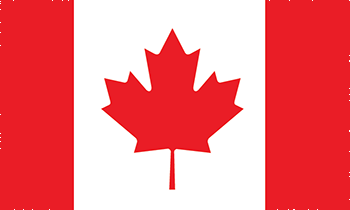What is a Kitchen Range?
If you’re thinking about updating your kitchen stove, you may be wondering what you should purchase – a cooktop or a range.
Today, we’re taking a closer look at one of the most common questions we hear from people interested in updating their kitchen appliances …
What is a kitchen range?
What is a Kitchen Range?
There is an appliance in just about every kitchen that is used just about every day. Well, at least on those days that you cook. It is that large square thing that you cook on – or in – depending on what you are making.
So, what do you call it? Some people just refer to it as a stove. Others? Well, they refer to these appliances as an oven. But, let’s take a moment and think about this. This appliance has both of these items – a stove and an oven. What is its true, all-encumbering name?
A range.
Because these appliances are an integral part of every kitchen, it is imperative that you know what they are and how they work. After all, you may just find yourself in need of purchasing one someday – and you’ll be glad you did your research.
The Parts
A range is primarily a combination of a cooktop or stove and an oven. Both combined into one nice and convenient package.
The difference is that each of these parts can be different sizes and offer different specs or features. Some ranges may be 30 inches, others may be 36 inches, and yet others may be 48 inches wide. The larger the range, the more benefits it is able to offer. For instance, larger ranges will have the capability to give you six stovetop burners and a griddle. Smaller ranges may only have space for two burners.
In addition to the parts, there is the question of how they are heated. This is where you get even more options. Many ranges come standard as either fueled by gas (propane or natural) and others are fueled by electricity. Of course, there is another option that seems to be favored by many – especially those professional or serious chefs and bakers.
This type of range is known as the dual fuel range. It gives the range the ability to cook with the power that works best. For those who are serious bakers, it is commonly known that gas ovens do not provide consistent heat, therefore preferring electric ovens for thorough and even baking. Things are quite different when it comes to the stove top. Electric heat has been known to make it difficult to control the cooking temperatures, while heat fueled by gas is more precise.
A Cooktop
Before we go any further, you need to know an important detail. Never confuse a cooktop with a range. Why? Because they are two entirely different appliances. See, a cooktop is just that – a cooktop. Whether it is an electric cooktop, a gas cooktop, or an induction cooktop – it only contains a cooktop. Or, in other words, a stove.
Most often cooktops are dropped into your counter space or installed within it. They have cabinets underneath and contain no oven. For all intents and purposes, a cooktop is solely a stove.
The best part about them is that they don’t take up as much space as a range. And, they can even be used as a secondary cooking appliance.
Understanding BTUs
When purchasing a range, you will come face-to-face with the term BTU. For example, a stove may have burners on it that range from 650 BTU to 18,000 BTU. What in the world does that mean? Let’s talk about it.
BTU stands for British Thermal Unit and it is known as the traditional unit of heat. To be specific, it is referred to as the required amount of heat that is needed to increase the temperature of one point of water by one degree Fahrenheit. To put it short, it is the amount of heat that is put off by the burner on your stove.
The range that you have in your home – or the one you are going to purchase – will likely come with varying amounts of BTUs. The average BTUs that your range should have is about 7,000. Some stoves give you less, some give you more. In fact, there are stoves that offer low-heating burners that are great for simmering. And, some that give you 18,000 BTUs when you need to boil that water quickly.
You shouldn’t have to worry too much about BTUs when purchasing a range. But, when it comes to purchasing a range hood, it is another story. You will need to know the strength of your stove so you know the strength of a range hood you need – to be sure it can handle cleaning the air.
The Benefits of Stainless Steel
Ranges come in designs, but stainless steel ranges are able to stand up to the job at hand. No matter how brutal you get with your cooking or baking abilities, the stainless steel is strong, durable, and it won’t corrode. In fact, you can cook a feast, wipe it down, and your range will still pop with shine in your kitchen.
Porcelain – Why You Need It
Professional ranges, such as those offered by Thor Kitchen, come with porcelain drip pans under and around the burners as well as porcelain ovens. And for good reason.
When you do a lot of cooking, the kitchen can get a bit, well, messy. Whether you are stirring soups or baking cupcakes, it does not matter how careful you try to be – you are bound to make a mess. Now, the question is, when it happens, will you be able to clean it up with ease? Remember, if you have a gas or electric stove top, it is likely that the surface area will be hot, leaving the food baked on.
Porcelain is what you need to look for if you want an easy cleanup every time.
Conclusion
Well, hopefully by now you have a better understanding of what a range is. And, while it is likely that you already have one in your kitchen, there is a good chance you may need to replace it in the future. And, when you do, you will understand that a professional grade, stainless steel, dual fuel range with porcelain drip pans is exactly what you need.



 CLAIM FREE GIFT
CLAIM FREE GIFT 